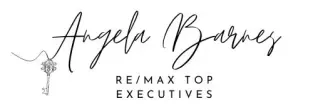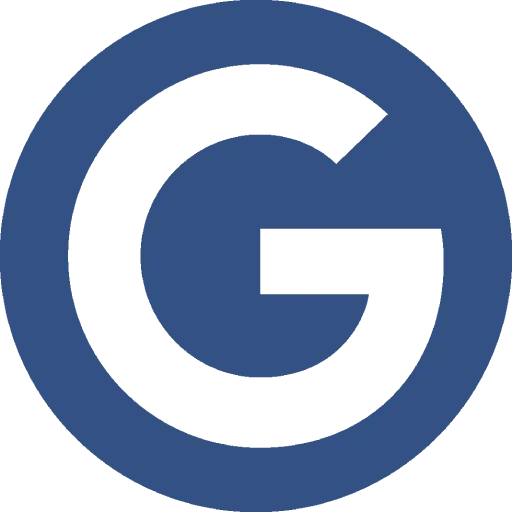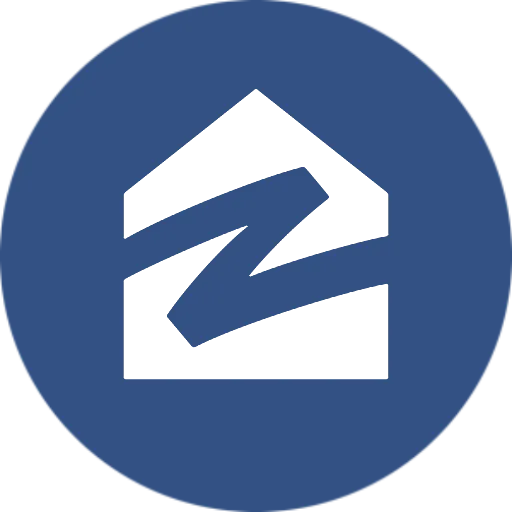17 U.S. Code § 512 - Limitations on liability relating to material online
(a)Transitory Digital Network Communications.—
A service provider shall not be liable for monetary relief, or, except as provided in subsection (j), for injunctive or other equitable relief, for infringement of copyright by reason of the provider’s transmitting, routing, or providing connections for, material through a system or network controlled or operated by or for the service provider, or by reason of the intermediate and transient storage of that material in the course of such transmitting, routing, or providing connections, if—
the transmission of the material was initiated by or at the direction of a person other than the service provider;
the transmission, routing, provision of connections, or storage is carried out through an automatic technical process without election of the material by the service provider;
the service provider does not select the recipients of the material except as an automatic response to the request of another person;
no copy of the material made by the service provider in the course of such intermediate or transient storage is maintained on the system or network in a manner ordinarily accessible to anyone other than anticipated recipients, and no such copy is maintained on the system or network in a manner ordinarily accessible to such anticipated recipients for a longer period than is reasonably necessary for the transmission, routing, or provision of connections; and
the material is transmitted through the system or network without modification of its content.
(b)System Caching.—
(1)Limitation on liability.—
A service provider shall not be liable for monetary relief, or, except as provided in subsection (j), for injunctive or other equitable relief, for infringement of copyright by reason of the intermediate and temporary storage of material on a system or network controlled or operated by or for the service provider in a case in which—
Bullet List
A. the material is made available online by a person other than the service provider;
B. the material is transmitted from the person described in subparagraph (A) through the system or network to a person other than the person described in subparagraph (A) at the direction of that other person; and
C. the storage is carried out through an automatic technical process for the purpose of making the material available to users of the system or network who, after the material is transmitted as described in subparagraph (B), request access to the material from the person described in subparagraph (A), if the conditions set forth in paragraph (2) are met.
(2)Conditions.— The conditions referred to in paragraph (1) are that—
A. the material described in paragraph (1) is transmitted to the subsequent users described in paragraph (1)(C) without modification to its content from the manner in which the material was
transmitted from the person described in paragraph (1)(A);
B. the service provider described in paragraph (1) complies with rules concerning the refreshing, reloading, or other updating of the material when specified by the person making the material available online in accordance with a generally accepted industry standard data communications protocol for the system or network through which that person makes the material available, except that this subparagraph applies only if those rules are not used by the person described in paragraph (1)(A) to prevent or unreasonably impair the intermediate storage to which this subsection applies;
C. the service provider does not interfere with the ability of technology associated with the material to return to the person described in paragraph (1)(A) the information that would have been available to that person if the material had been obtained by the subsequent users described in paragraph (1)(C) directly from that person, except that this subparagraph applies only if that technology—Bullet List
(i)does not significantly interfere with the performance of the provider’s system or network or with the intermediate storage of the material;
(ii) is consistent with generally accepted industry standard communications protocols; and
(iii)does not extract information from the provider’s system or network other than the information that would have been available to the person described in paragraph (1)(A) if the subsequent users had gained access to the material directly from that person;
D. if the person described in paragraph (1)(A) has in effect a condition that a person must meet prior to having access to the material, such as a condition based on payment of a fee or provision of
a password or other information, the service provider permits access to the stored material in significant part only to users of its system or network that have met those conditions and only in accordance with those conditions; and
E. if the person described in paragraph (1)(A) makes that material available online without the authorization of the copyright owner of the material, the service provider responds expeditiously
to remove, or disable access to, the material that is claimed to be infringing upon notification of claimed infringement as described in subsection (c)(3), except that this subparagraph applies only if—
(i). the material has previously beenremoved from the originating site or access to it has been disabled, or a court has ordered that the material be removed from the originating site or that access to the material on the originating site be disabled; and
(ii)the party giving the notification includes in the notification a statement confirming that the material has been removed from the originating site or access to it has been disabled or that a court has ordered that the material be removed from the originating site or that access to the material on the originating site be disabled.
(c) Information Residing on Systems or Networks At Direction of Users.—
(1)In general.— A service provider shall not be liable for monetary relief, or, except as provided in subsection (j), for injunctive or other equitable relief, for infringement of copyright by reason of the storage at the direction of a user of material that resides on a system or network controlled or operated by or for the service provider, if the service provider—
A. (i) does not have actual knowledge that the material or an activity using the material on the system or network is infringing;
(ii) in the absence of such actual knowledge, is not aware of facts or circumstances from which infringing activity is apparent; or
(iii) upon obtaining such knowledge or awareness, acts expeditiously to remove, or disable access to, the material;
B. does not receive a financial benefit directly attributable to the infringing activity, in a case in which the service provider has the right and ability to control such activity; and
C. upon notification of claimed infringement as described in paragraph (3), responds expeditiously to remove, or disable access to, the material that is claimed to be infringing or to be the subject of infringing activity.
(2)Designated agent.— The limitations on liability established in this subsection apply to a service provider only if the service provider has designated an agent to receive notifications of claimed infringement described in paragraph (3), by making available through its service, including on its website in a location accessible to the public, and by providing to the Copyright Office, substantially the following information:
A. the name, address, phone number, and electronic mail address of the agent.
B. other contact information which the Register of Copyrights may deem appropriate. The Register of Copyrights shall maintain a current directory of agents available to the public for inspection, including through the Internet, and may require payment of a fee by service providers to cover the costs of maintaining the directory.
(3)Elements of notification.—
A. To be effective under this subsection, a notification of claimed infringement must be a written communication provided to the designated agent of a service provider that includes substantially the following:
(i) A physical or electronic signature of a person authorized to act on behalf of the owner of an exclusive right that is allegedly infringed.
(ii) Identification of the copyrighted work claimed to have been infringed, or, if multiple copyrighted works at a single online site are covered by a single notification, a representative list of such works at that site.
(iii) Identification of the material that is claimed to be infringing or to be the subject of infringing activity and that is to be removed or access to which is to be disabled, and information reasonably sufficient to permit the service provider to locate the material.
(iv) information reasonably sufficient to permit the service provider to contact the complaining party, such as an address, telephone number, and, if available, an electronic mail address at which the complaining party may be contacted.
(v) A statement that the complaining party has a good faith belief that use of the material in the manner complained of is not authorized by the copyright owner, its agent, or the law.
(vi) A statement that the information in the notification is accurate, and under penalty of perjury, that the complaining party is authorized to act on behalf of the owner of an exclusive right that is allegedly infringed.
(B) (i)Subject to clause (ii), a notification from a copyright owner or from a person authorized to act on behalf of the copyright owner that fails to comply substantially with the
provisions of subparagraph (A) shall not be considered under paragraph (1)(A) in determining whether a service provider has actual knowledge or is aware of facts or circumstances from which infringing activity is apparent.
(ii) In a case in which the notification that is provided to the service provider ’s designated agent fails to comply substantially with all the provisions of subparagraph (A) but
substantially complies with clauses (ii), (iii), and (iv) of subparagraph (A), clause (i) of this subparagraph applies only if the service provider promptly attempts to contact the person making the notification or takes other reasonable steps to assist in the receipt of notification that substantially complies with all the provisions of subparagraph (A).
(d)Information Location Tools.—A service provider shall not be liable for monetary relief, or, except as provided in subsection (j), for injunctive or other equitable relief, for infringement of copyright by reason of the provider referring or linking users to an online location containing infringing material or infringing activity, by using information location tools, including a directory, index, reference, pointer, or hypertext link, if the service provider—
(1)
(A)does not have actual knowledge that the material or activity is infringing;
(B) in the absence of such actual knowledge, is not aware of facts or circumstances from which infringing activity is apparent; or
(C)upon obtaining such knowledge or awareness, acts expeditiously to remove, or disable access to, the material;
(2)does not receive a financial benefit directly attributable to the infringing activity, in a case in which the service provider has the right and ability to control such activity; and
(3)upon notification of claimed infringement as described in subsection (c)(3), responds expeditiously to remove, or disable access to, the material that is claimed to be infringing or to be the subject of infringing activity, except that, for purposes of this paragraph, the information described in subsection (c)(3)(A)(iii) shall be identification of the reference or link, to material or activity claimed to be infringing, that is to be removed or access to which is to be disabled, and information reasonably sufficient to permit the service provider to locate that reference or link.
(e)Limitation on Liability of Nonprofit Educational Institutions.—
(1) When a public or other nonprofit institution of higher education is a service provider, and when a faculty member or graduate student who is an employee of such institution is performing a
teaching or research function, for the purposes of subsections (a) and (b) such faculty member or graduate student shall be considered to be a person other than the institution, and for the purposes of subsections (c) and (d) such faculty member’s or graduate student’s knowledge or awareness of his or her infringing activities shall not be attributed to the institution, if—
A. such faculty member’s or graduate student’s infringing activities do not involve the provision of online access to instructional materials that are or were required or recommended, within the preceding 3-year period, for a course taught at the institution by such faculty member or graduate student;
B. the institution has not, within the preceding 3-year period, received more than two notifications described in subsection (c)(3) of claimed infringement by such faculty member or graduate student, and such notifications of claimed infringement were not actionable under subsection (f); and
C. the institution provides to all users of its system or network informational materials that accurately describe, and promote compliance with, the laws of the United States relating to copyright.
(2) For the purposes of this subsection, the limitations on injunctive relief contained in subsections (j)(2) and (j)(3), but not those in (j)(1), shall apply.
f)Misrepresentations.— Any person who knowingly materially misrepresents under this section—
(1)that material or activity is infringing, or
(2) that material or activity was removed or disabled by mistake or misidentification, that material or activity was removed
or disabled by mistake or misidentification, shall be liable for any damages, including costs and attorneys’ fees, incurred by the alleged infringer, by any copyright owner or copyright owner’s authorized licensee, or by a service provider, who is injured by such
misrepresentation, as the result of the service provider relying upon such misrepresentation in removing or disabling access to the material or activity claimed to be infringing, or in replacing the removed material or ceasing to disable access to it.
(g)Replacement of Removed or Disabled Material and Limitation on Other Liability.—
(1)No liability for taking down generally.— Subject to paragraph (2), a service provider shall not be liable to any person for any claim based on the service provider’s good faith disabling of access to, or removal of, material or activity claimed to be infringing or
based on facts or circumstances from which infringing activity is apparent, regardless of whether the material or activity is ltimately determined to be infringing.
(2)Exception.—Paragraph (1) shall not apply with respect to material residing at the direction of a subscriber of the service provider on a system or network controlled or operated by or for the service provider that is removed, or to which access is disabled by the service provider, pursuant to a notice provided under subsection (c)(1)(C), unless the service provider—
(A) takes reasonable steps promptly to notify the subscriber that it has removed or disabled access to the material;
(B) upon receipt of a counter notification described in paragraph (3), promptly provides the person who provided the notification under subsection (c)(1)(C) with a copy of the counter notification, and informs that person that it will replace the removed material or cease disabling access to it in 10 business days; and
(C)replaces the removed material and ceases disabling access to it not less than 10, nor more than 14, business days following receipt of the counter notice, unless its designated agent first receives notice from the person who submitted the notification under subsection (c)(1)(C) that such person has filed an action seeking a court order to restrain the subscriber from engaging in infringing activity relating to the material on the service provider’s system or network.
(3)Contents of counter notification.—To be effective under this subsection, a counter notification must be a written communication provided to the service provider’s designated agent that includes substantially the following:
(A)A physical or electronic signature of the subscriber.
(B)Identification of the material that has been removed or to which access has been disabled and the location at which the material appeared before it was removed or access to it was disabled.
(C)A statement under penalty of perjury that the subscriber has a good faith belief that the material was removed or disabled
as a result of mistake or misidentification of the material to be removed or disabled.
(D)The subscriber’s name, address, and telephone number, and a statement that the subscriber consents to the jurisdiction of Federal District Court for the judicial district in which the address is located, or if the subscriber’s address is outside of the United
States, for any judicial district in which the service provider may be found, and that the subscriber will accept service of process from the person who provided notification under subsection (c)(1)(C) or an agent of such person.
(4)Limitation on other liability.—A service provider’s compliance with paragraph(2) shall not subject the service provider to liability for copyright infringement with respect to the material identified in the notice provided under subsection (c)(1)(C).
(h)Subpoena To Identify Infringer.—
Request.—A copyright owner or a person authorized to act on the owner’s behalf may request the clerk of any United States district court to issue a subpoena to a service provider for identification of an alleged infringer in accordance with this subsection.
Contents of request.— The request may be made by Bullet List filing with the clerk—
(A)a copy of a notification described insubsection (c)(3)(A);
(B)a proposed subpoena; and
(C)a sworn declaration to the effect that the purpose for which the subpoena is sought is to obtain the identity of an alleged infringer and that such information will only be used for the purpose of protecting rights under this title.
Contents of subpoena.— The subpoena shall authorize and order the service provider receiving the notification and the subpoena to expeditiously disclose to the copyright owner or person authorized by the copyright owner information sufficient to identify the alleged infringer of the material described in the notification to the extent such information is available to the service provider.
Basis for granting subpoena.— If the notification filed satisfies the provisions of subsection (c)(3)(A), the proposed subpoena is in proper form, and the accompanying declaration is properly executed, the clerk shall expeditiously issue and sign the proposed subpoena and return it to the requester for delivery to the service provider.
Actions of service provider receiving subpoena.— Upon receipt of the issued subpoena, either accompanying or subsequent to the receipt of a notification described in
subsection (c)(3)(A), the service provider shall expeditiously disclose to the copyright owner or person authorized by the copyright owner the information required by the subpoena, notwithstanding any other provision of law and regardless of whether the service provider responds to the notification.Rules applicable to subpoena.— Unless otherwise provided by this section or by applicable rules of the court, the procedure for issuance and delivery of the subpoena, and the remedies for noncompliance with the subpoena, shall be governed to the greatest extent practicable by those provisions of the Federal Rules of Civil Procedure governing the issuance, service, and enforcement of a subpoena duces tecum.
(i)Conditions for Eligibility.—
(1) Accommodation of technology.—The limitations on liability established by this section shall apply to a service provider
only if the service provider—
(A)has adopted and reasonably implemented, and informs subscribers and account holders of the service provider’s system or network of, a policy that provides for the termination in appropriate circumstances of subscribers and account holders of the service provider’s system or network who are repeat infringers; and
(B)accommodates and does not interfere with standard technical measures.
(2)Definition.—As used in this subsection, the term “standard technical measures” means technical measures that are used by copyright owners to identify or protect copyrighted works and—
(A)have been developed pursuant to a broad consensus of copyright owners and service providers in an open, fair, voluntary, multi-industry standards process;
(B)are available to any person on reasonable and nondiscriminatory terms; and
(C)do not impose substantial costs on service providers or substantial burdens on their systems or networks.
(j)injunctions.— The following rules shall apply in the case of any application for an injunction under section 502 against a service provider that is not subject to monetary remedies under this section:
Scope of relief.—
(A) With respect to conduct other than that which qualifies for the limitation on remedies set forth in subsection (a), the court ay grant injunctive relief with respect to a service provider only in one or more of the following forms:
(i)An order restraining the service provider from providing access to infringing material or activity residing at a particular online site on the provider’s system or network.
(ii)An order restraining the service provider from providing access to a subscriber or account holder of the service provider
’s system or network who is engaging in infringing activity and is identified in the order, by terminating the accounts of the subscriber or account holder that are specified in the order.
(iii)Such other injunctive relief as the court may consider necessary to prevent or restrain infringement of copyrighted material specified in the order of the court at a particular online location, if such relief is the least burdensome to the service provider
among the forms of relief comparably effective for that purpose.
(B)If the service provider qualifies for the limitation on remedies described in subsection (a), the court may only grant injunctive relief in one or both of the following forms:(i)An order restraining the service provider from providing access to a subscriber or account holder of the service provider's system or network who is using the provider’s service to engage in infringing activity and is identified in the order, by Terminating the accounts of the subscriber or account holder that are specified in the order.
(ii)An order restraining the service provider from providing access, by taking reasonable steps specified in the order to block access, to a specific, identified, online location outside the United States.
Considerations.—The court, in considering the relevant criteria for injunctive relief under applicable law, shall consider—
(A)whether such an injunction, either alone or in combination with other such injunctions issued against the same
service provider under this subsection, would significantly burden either the provider or the operation of the
provider’s system or network;(B)the magnitude of the harm likely to be suffered by the copyright owner in the digital network environment if steps
are not taken to prevent or restrain the infringement;
(C)whether implementation of such an injunction would be technically feasible and effective, and would not interfere with access to non infringing material at other online locations; and(D)whether other less burdensome and comparably effective means of preventing or restraining access to the infringing material are available.
Notice and ex parte orders.—Injunctive relief under this subsection shall be available only after notice to the service provider
and an opportunity for the service provider to appear are provided, except for orders ensuring the preservation of evidence or other orders having no material adverse effect on the operation of the service provider’s communications network.
(k)Definitions.—
(1)Service provider.—
(A)As used in subsection (a), the term “service provider” means an entity offering the transmission, routing, or providing of connections for digital online communications, between or among points specified by a user, of material of the user’s choosing, without modification to the content of the material as sent or received.
(B)As used in this section, other than subsection (a), the term “service provider” means a provider of online services or network access, or the operator of facilities therefor, and includes an entity described in subparagraph (A).Monetary relief.—As used in this section, the term “monetary relief” means damages, costs, attorneys’ fees, and any other form of monetary payment.
(l)OtherDefenses Not Affected.—The failure of a service provider’s conduct to qualify for limitation of liability under this section shall not bear adversely upon the consideration of a defense by the service provider that the service provider’s conduct is not infringing under this title or any other defense.
(m)Protection of Privacy.—Nothing in this section shall be construed to condition the applicability of subsections (a) through (d) on—
a service provider monitoring its service or affirmatively seeking facts indicating infringing activity, except to the extent consistent with a standard technical measure complying with the provisions of subsection (i); or
a service provider gaining access to, removing, or disabling access to material in cases in which such conduct is prohibited by law.
(n)Construction.—Subsections (a), (b), (c), and (d)describe separate and distinct functions for purposes of applying this section. Whether a service provider qualifies for the limitation on liability in any one of those subsections shall be based solely on the criteria in that subsection, and shall not affect a determination of whether that service provider qualifies for the limitations on liability under any other such subsection.










